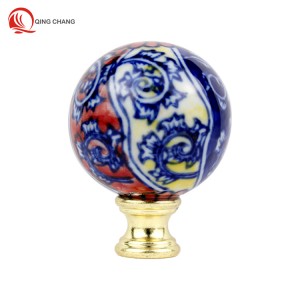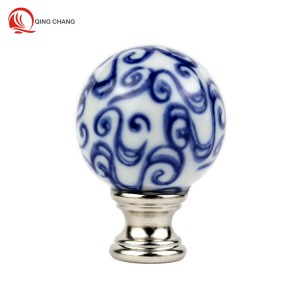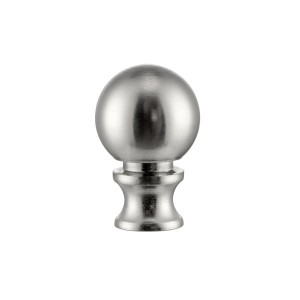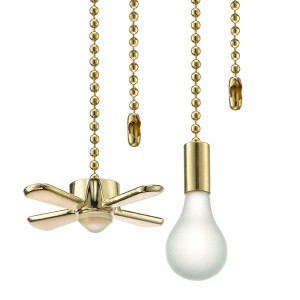The charm of ceramic materials
Introduction: In home decoration, ceramic lamp finials are widely used on various utensils, such as desk lamps, ornaments, etc. Due to its unique material characteristics, ceramic lamp finials are highly sought after. This article will explore the production process of ceramic lamp finials and their unique material characteristics, such as the solidity and smooth texture formed after high-temperature firing. The production process of ceramic lamp finials requires multiple steps.
1. According to the design paper, common methods for molding ceramic prototypes include manual kneading and mold making. Hand kneading is a relatively traditional method that uses the artist's handicraft skills to shape ceramic prototypes according to the requirements of the design paper. Mold making involves first making a wooden mold, then placing the mud into the mold, drying it for a certain period of time, and then taking out the mold to obtain the formed ceramic prototype.
2. Next is the process of trimming and glazing the ceramic prototype. Trimming is to make the shape of the ceramic lamp finials more perfect, which can be finely trimmed with sandpaper or knives. Glazing is to give ceramic lamp finials a unique texture and protect their surfaces. Before applying glaze, it is necessary to clean and remove dust on the ceramic prototype to ensure better glaze effect. Glazing can be done through spraying or immersion coating, and common glaze materials include transparent glaze, colored glaze, etc.
3. After completing the glaze coating, place the ceramic lamp finials in the kiln for high-temperature firing. The firing temperature is generally above 1000 degrees Celsius, and even up to around 1300 degrees Celsius. High temperature firing is a key step for ceramic lamp finials to have robustness and durability. During the high-temperature firing process, ceramic materials undergo chemical reactions, making their structure compact and hard. This structure enables ceramic lamp finials to have strong compressive and impact resistance, making them less prone to wear or deformation.
4. In addition, the unique material characteristics of ceramic lamp finials are mainly reflected in their robustness and smooth texture. Due to high-temperature firing, ceramic lamp finials become very sturdy and can withstand certain external forces and pressures without being easily damaged. This enables ceramic lamp finials to have a longer service life and are less prone to cracks or fragments.
5. In addition, the surface of ceramic lamp finials is smooth and soft, thanks to their special firing process and glaze coating treatment. The firing process forms a hard crystal structure on the surface of ceramics, which has a certain degree of wear resistance and corrosion resistance. During the glaze coating process, a smooth and bright glaze is formed on the ceramic surface, increasing its ornamental and texture. Compared with other materials, the unique material characteristics of ceramic lamp finials make them highly favored. Not only does it have good decorative and ornamental properties, but it also has practicality and durability.
6. As a chemically inert material, ceramic lamp finials are not easily affected by external environments such as humidity and high temperatures.
Therefore, in indoor environments, ceramic lamp finials can maintain their original beauty and functionality for a long time. In addition, ceramic materials also have environmental and health benefits, do not release harmful substances, and are not harmful to human health or the environment.
In summary, ceramic lamp finials are decorative objects made of high-temperature fired ceramic materials. The production process requires steps such as molding, trimming, glazing, and high-temperature firing. High temperature firing is a key step for ceramic lamp finials to possess robustness and durability, while also endowing them with a smooth texture. Ceramic lamp finials have unique material characteristics such as firmness, smooth texture, and environmental friendliness, making them one of the favorite decorative materials for people.
Types of Lighting Parts
Ready to Start Your Lighting Parts Project?
Post time: Aug-14-2023










